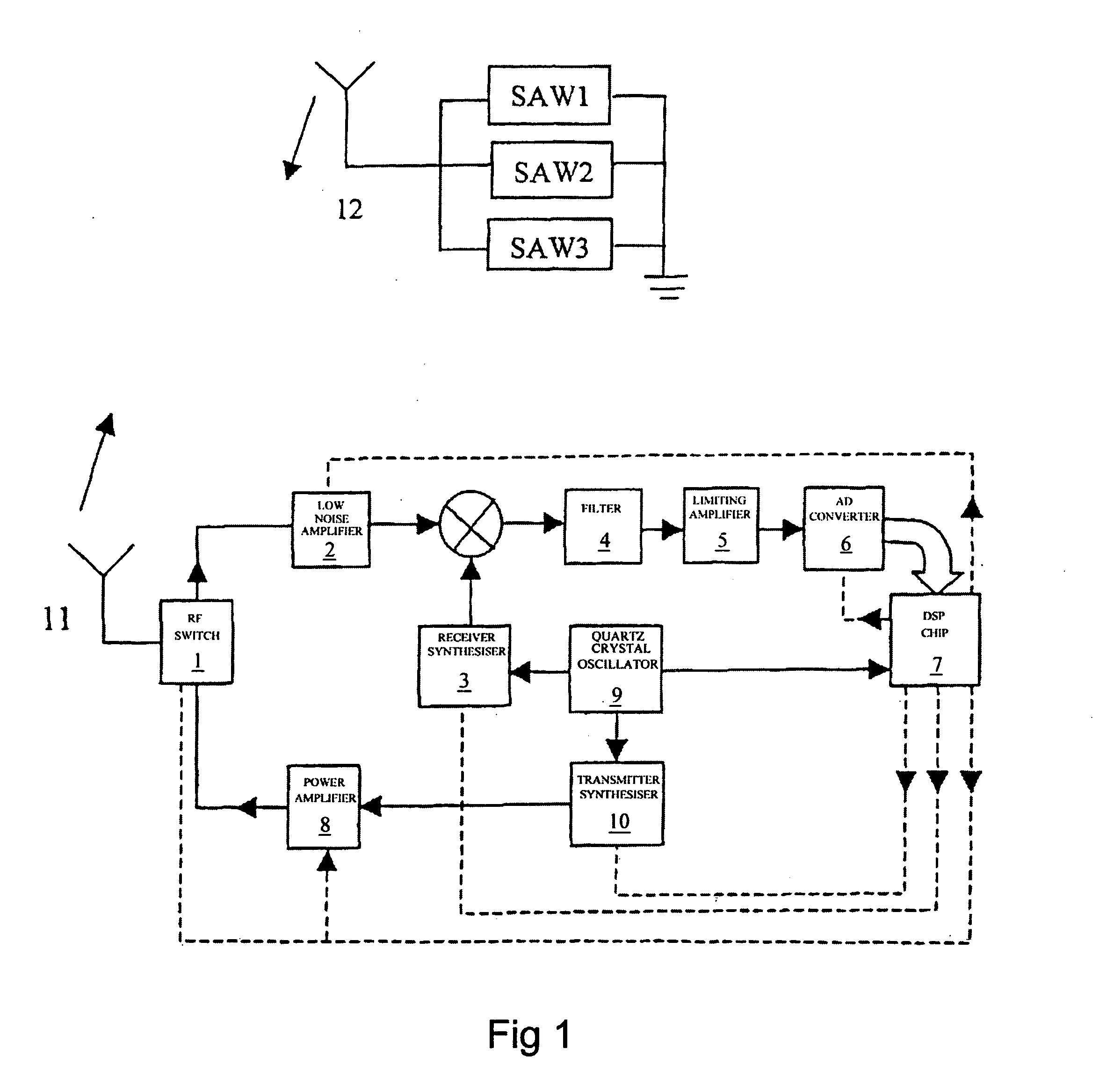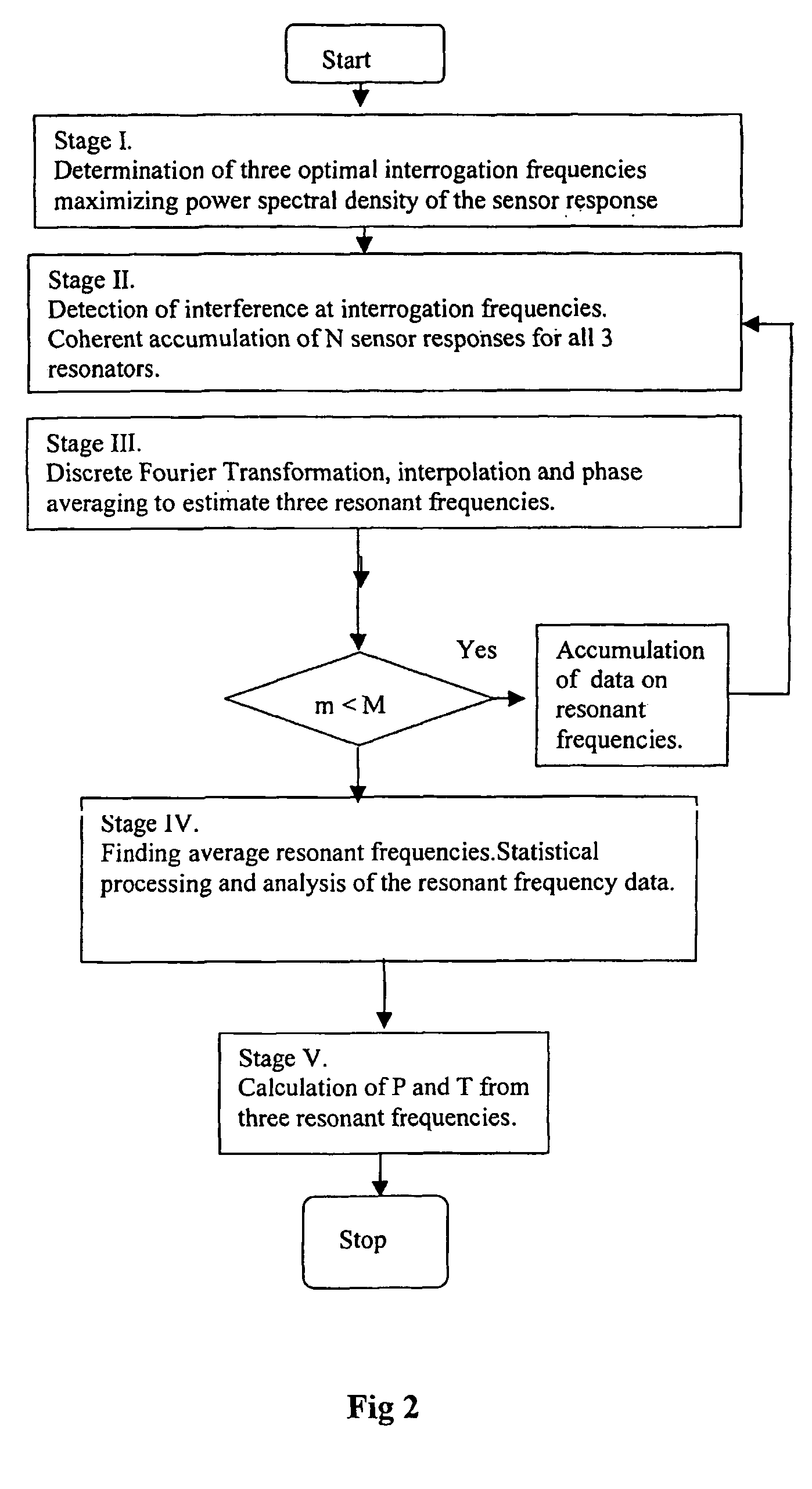Interrogation method for passive sensor monitoring system
a passive sensor and interrogation method technology, applied in transmission systems, tyre measurements, frequency analysis, etc., can solve the problems of inability to measure the beat frequency, unreliability, cumbersomeness, etc., and achieve the effect of high efficiency of resonator excitation and high measurement accuracy
- Summary
- Abstract
- Description
- Claims
- Application Information
AI Technical Summary
Benefits of technology
Problems solved by technology
Method used
Image
Examples
Embodiment Construction
[0018]Referring firstly to FIG. 1, the present invention is particularly applicable to a system for monitoring the temperature and pressure in a vehicle tire. However, it is to be understood that the invention is not limited to this application and may be applied to other circumstances where pressure and temperature are to be monitored, or indeed to other circumstances where a plurality of other perimeters are to be measured by a passive sensor system. The preferred embodiment of the present invention includes three surface acoustic wave devices SAW1, SAW2 and SAW3 which are connected to a common antenna 12. While the use of SAW devices is preferred as a means of generating signals indicative of the sensed condition, it is to be understood that the invention is not limited to such devices and other passive sensors capable of providing appropriate indications by means of resonant frequency may be employed.
[0019]In the particular preferred application of the present invention (vehicle...
PUM
| Property | Measurement | Unit |
|---|---|---|
| peak power | aaaaa | aaaaa |
| frequency | aaaaa | aaaaa |
| interrogation frequencies | aaaaa | aaaaa |
Abstract
Description
Claims
Application Information
 Login to View More
Login to View More - R&D
- Intellectual Property
- Life Sciences
- Materials
- Tech Scout
- Unparalleled Data Quality
- Higher Quality Content
- 60% Fewer Hallucinations
Browse by: Latest US Patents, China's latest patents, Technical Efficacy Thesaurus, Application Domain, Technology Topic, Popular Technical Reports.
© 2025 PatSnap. All rights reserved.Legal|Privacy policy|Modern Slavery Act Transparency Statement|Sitemap|About US| Contact US: help@patsnap.com



